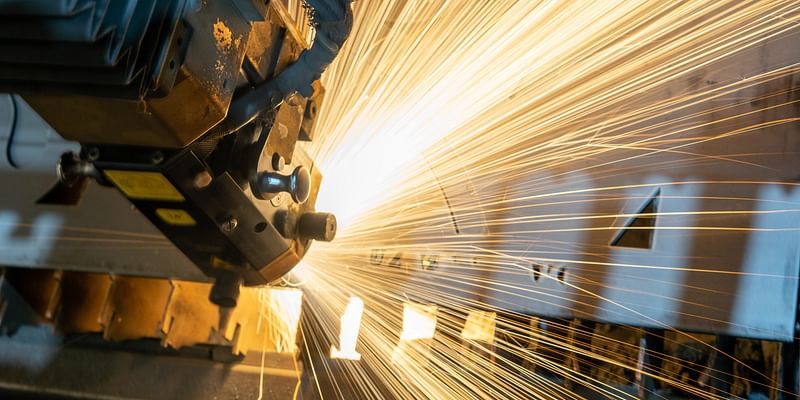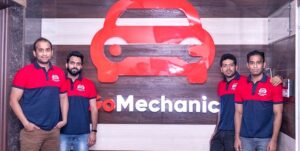
Industrial safety has become an utmost priority due to its significance in safeguarding human lives in high-risk sectors. Industries such as aviation, oil and gas, mining, construction, steel manufacturing, etc., are plagued by safety challenges. The hazardous environment in factories and manufacturing sites raises serious concerns about the human rights of workers.
Recent data reveals that three people died and 11 sustained injuries each day between 2017 and 2022 due to accidents occurring in registered factories in India.
Additionally, as per the DGFASLI report, around 3,331 deaths between 2018 and 2020 were recorded due to hazardous situations in the registered factories in India. However, only 14 people were imprisoned for the offences under the Factories Act of 1948.
Against the backdrop of such hazards, it has become vital to integrate safety solutions in industrial work processes. Many companies have already started recognising the potential of technology in formulating an effective safety management system as part of the risk prevention and mitigation strategy.
Understanding industrial safety
Industrial environments are often characterised by dynamic resources—mobile equipment and pedestrian workers—which make higher rates of industrial fatalities more evident regularly, requiring facilities to create and maintain a safe and efficient work environment. A good safety management mechanism can help in minimising risks of unscheduled downtime and accidents.
Industrial safety mechanism helps people maintain the safety of human resources and facility assets. One fatality or on-site accident can lead to billion-dollar losses in the business, including litigations and damage to reputation.
In a production setting, people should feel safe and protected. If they feel their company values their life and care about them, it boosts their morale, productivity, and even loyalty to that facility.
Tech-embedded solutions to create a safety culture
Before the advent and integration of advanced technologies, industrial safety remained limited to the provision of safety gear and other contingency plans. Now, manufacturing facilities have redefined the safety culture to increase the proficiency of an organisation.
Real-time safety performance metrics
Safety performance management in industrial environments traditionally intervened to mitigate unsafe behaviour that could lead to serious accidents. Industries used various safety measures for decades based on a reactive approach, emphasising reactive identification and monitoring of incidents, learning from past experiences.
However, technology integration has revolutionised this approach and encouraged facilities to analyse relevant insights before any accident occurs.
As part of the new-age safety measures, technology integration combines different layers of mechanisms to capture safety metrics, including incident reporting, audits, training documentation, and videos.
By enabling online tracking at each step of KPI and generating reporting metrics, reminders for the same help facilities acquire accurate and real-time safety performance metrics.
Hazard identification
Workers in high-risk industries or manufacturing facilities are constantly exposed to several risks due to the nature of work like in mining, construction, etc. Identification of hazards remains the first step to risk prevention.
After knowing the potential hazards, safety management teams can formulate strategies to respond proactively and implement solutions to create a safer work environment.
To ensure real-time identification and prevention, safety management teams leverage the potential of data analytics to categorise predictable variables—injuries, illness, and casualties.
Facilities can deploy exclusive technology solutions to prevent any unauthorised access to running machines that leads to fatal accidents. Similarly, innovative lock systems enable complete digitisation of the tag in/tag out process via OTP verification.
Data collection and analysis for safety
Having a robust safety mechanism backed by data analytics can assist facilities understand the root cause of an accident. It can further aid the safety management teams in exploring existing and potential hazards to continuously improve existing safety mechanisms. Many facilities have started embedding multiple reporting systems to gather and analyse data on fatal and non-fatal injuries, etc.
Data analysis is key for all major solutions. Facilities can use dashboards to report deviations from safety metrics and accidents on a weekly or quarterly basis. It is very helpful for auditors/higher management to evaluate safety and health regularly.
Bottomline
In recent years, emphasis on occupational safety standards has grown steadily across industries. A sound industrial safety management system, integrated with new-age technologies, should be created to ensure the workflow is carried out with utmost safety measures to keep the company’s critical assets and human resources safe.
Swayam Prakash Agrawal is the Founder and CEO of Aarika Innovation.
Edited by Suman Singh
(Disclaimer: The views and opinions expressed in this article are those of the author and do not necessarily reflect the views of YourStory.)










